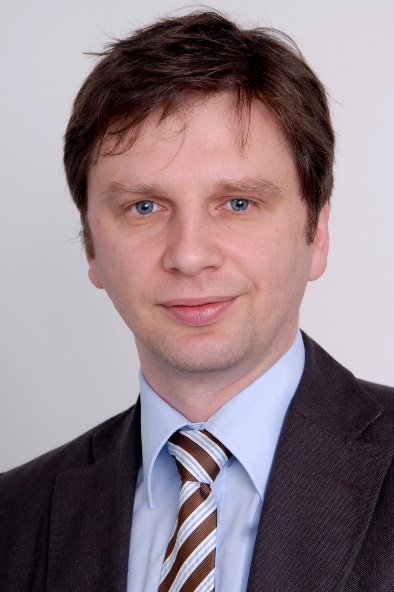
Curriculum Vitae
Oktober 1993 – Research Fellow am Center for Neurologic Diseases,
Oktober 1994 – Brigham and Women´s Hospital (H.L.Weiner), Harvard Medical School, Boston, USA,
November 1995 – Wissenschaftlicher Assistent, Institut Anatomie,
Dezember 1995 – Universität Köln (Prof. Dr. K. Addicks)
Januar 1996 – AiP/Assistenzarzt, Medizinische Universitätsklinik
März 1999 Freiburg, Hämatologie/Onkologie (Prof. R. Mertelsmann)
November 1997 – Promotion Medizin, Universität Köln
Mai 1999 – Postdoc, Dept.of Pathology (T. Gajewski), University of
August 2002 – Chicago, Chicago, USA
September 2002 – Assistenzarzt, Medizinische Universitätsklinik Freiburg,
September 2007 – Hämatologie/Onkologie (Prof. R. Mertelsmann)
Juni 2007 – Facharzt Innere Medizin
seit Oktober 2007 – Oberarzt, Medizinische Universitätsklinik Freiburg, Hämatologie/Onkologie (Prof. R. Mertelsmann)
seit Januar 2009 – zusätzlich Oberarzt, Center of Chronic Immundeficiency (CCI), Medizinische Universitätsklinik Freiburg,
12. Februar 2009 – Habilitation (Venia legendi) in Innerer Medizin, Universität Freiburg
Verbesserte Krankheitskontrolle durch Hochdosistherapie und autologe Stammzelltransplantation in Patienten mit PTCL,NOS, AITL und ALCL
Marks R., Fan W., Engelhardt M., Veelken H., Finke J.
Medizinische Universitätsklinik Freiburg, Hämatologie/Onkologie, Freiburg, Germany
Introduction: Since no standard therapy exists, CHOP-like therapies are commonly used as therapy for T-NHL. The impact of early dose intensification with high-dose therapy and autologous stem cell transplantation (ASCT) is less well defined.
Methods: We present retrospective longterm follow up data from a single center using response adapted early dose intensification and first line ASCT in patients with T-NHL.
Results: From 12/1986-07/2009 a total of 113 patients were treated. The median age was 56 years (range: 18-90), the diagnoses included: PTCL,NOS (n=46), AITL (n=25), ALCL,ALK negativ (n=26), ALCL,ALK positiv (n=7), and others (n=11). Initial chemotherapy included anthracycline based/CHOP-like regimens in most of the cases. If no complete remission (CR) could be achieved by CHOP-like induction, early intensification, mainly with VIPE/VCPE (epirubicin 50mg/m2 , etoposide 500mg/m2 , cisplatin 50mg/m2 , ifosfamide 4g/m2 or cyclophosphamide 1350mg/m2) or DHAP regimens, and ASCT after BEAM conditioning (66.6% of all ASCT) was initiated. 5-year overall survival (OS) of the entire group was 53,1% (median follow-up: 59.7 months). 5y-OS were 62,8% for patients with PTCL,NOS, 45,1% (AITL) and 48,6% (ALCL, ALK neg.). In PTCL,NOS patients 31/46 (68,9%) experienced a CR1 after primary therapy. Of those 31 patients, CR was achieved after CHOP-like induction in 18 and after intensification in additional 3 cases, while the remaining 10 patients experienced CR only after ASCT. 5 year-relapse rate (RR) for patients in CR was significantly worse for patients not undergoing ASCT (68,0% v. 15,6%, p=0,0046) with relapses occurring up to 4 years after completion of standard dose therapy. Nevertheless, primary therapy with ASCT did not result in significantly improved 5y-OS compared to patients without ASCT (64,6% v. 60,1%), mainly due to longterm disease control with second line ASCT in some patients relapsed after standard therapy. Similar results were observed in patients with ALCL, ALK neg.: 5y-OS with/without primary ASCT was 60,8% v. 38,5% (p=0.64); cumulative 5-y RR for patients in CR1 was 11,1% v. 40,0% (p=0.26). In contrast, in AITL patients treatment with ASCT resulted in a significantly improved 5-y OS (87,5% v. 21,8%, p=0.01). Conclusion: Primary ASCT results in improved disease control in T-NHL. Nevertheless, less well understood heterogeneity of lymphoma biology might be of more importance for the treatment outcome than dose intensity.